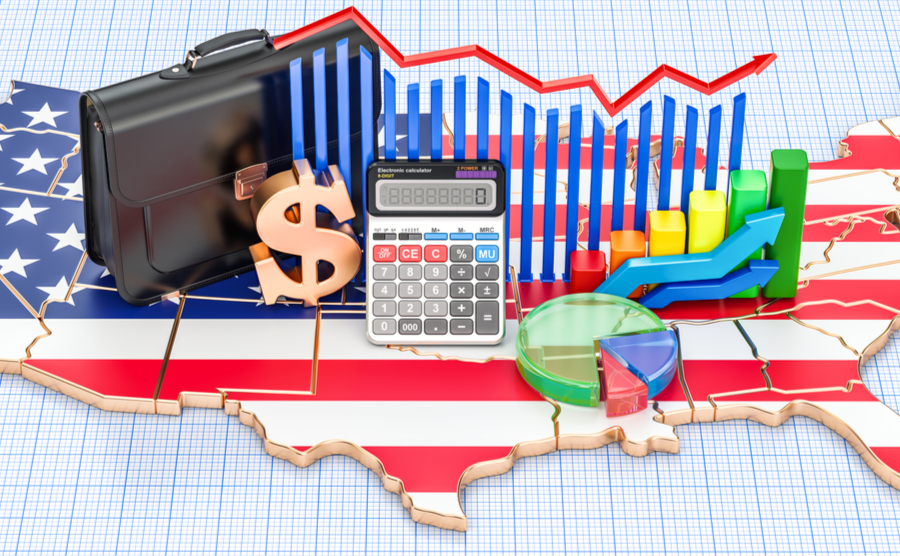
Yesterday was dominated by data from the US
Sterling has remained strong this week, certainly relative to the first few months of 2023, against both the euro and US dollar.
Bad economic news broke out all over the Western world this week, with the eurozone in recession, American unemployment rising and British house prices falling at an annual rate for the first time since 2012. The British Chambers of Commerce have warned that the UK could still head into recession as inflation and high interest rates continue to bite.
The UK government warned, in so many words, that the high street banks should stop ripping off older, loyal customers. Parliament’s Treasury Select Committee noted that while interest rates have been 4% since February, the big four retail banks are still offering a “measly” 0.7% to 1.35% on easy access savings accounts. Chair of the committee Harriet Baldwin MP, added: “We remain concerned that the loyalty penalty is especially prominent for elderly and vulnerable customers who may still rely on high street bank branches.”
For exchange rates, it was the unexpectedly high rise in US unemployment that dominated the market, with the dollar weakening all round as the markets saw the likelihood of a dovish interest rate decision from the Federal Reserve next week.
Economic data wasn’t all bad, however. In the UK, new car sales were up by nearly 17% year on year, S&P services, composite and manufacturing PMI was all revised upwards and all remain firmly in the positive 50+ position (unlike some countries) and RICS surveyors were a little less pessimistic than they had been about the UK property market.
On a visit to Washington DC, British Prime Minister Rishi Sunak and President Biden unveiled an “Atlantic declaration” to increase UK-US ties. As well as working together on regulating AI and in defence and nuclear energy, the agreement is intended to protect the western world’s supplies of critical minerals used in, for example, electric car batteries, and cut China out of the supply chain. While the declaration is well short of a trade deal, there is planned to be a “data bridge” which could cut red tape for exporters, and the start of a scheme for mutual recognition of qualifications for engineers and accountants.
Next week is a big one for exchange rates, with interest rate decisions in the USA and eurozone, plus potentially market-moving data from the UK side too.
Make sure any upcoming transactions are protected against the risks of sudden market movements. Secure a fixed exchange rate now with a forward contract; call your Business Trader on 020 3918 7255 to get started.
GBP: Pound maintains position close to 2023 high
Another strong day for the pound yesterday saw it again challenging for its highest point against the euro since summer 2022, but falling slightly short.
Against the US dollar, sterling strengthened to its best position since early May. However, there are suggestions that this could be the high point for GBP/USD, based on technical analysis of the graphs.
Data this week has rather drifted to a standstill, and while next week we will have unemployment and GDP data, unlike the ECB and Fed there is no interest rate decision next week. The next Bank of England decision will be on 22nd June.
GBP/USD past year
EUR: Eurozone recession not the downer it could have been
It was a decidedly mixed day for the single currency yesterday, with modest falls against the pound, yen and Aussie dollar, but sizeable rises of 0.5% to 0.75% against the US and Canadian dollars and renminbi.
The eurozone was revealed to have been in a mild recession over the last quarter of 2022 and first quarter of 2023 yesterday, with GDP falling by 0.1% between January and March. The falls in Q1 were among the largest in Germany and the Netherlands (-0.3% and -0.7% respectively) while there was growth in France, Spain and Italy of between 0.2% and 0.6%.
There is no data today, but two members of the European Central Bank’s (ECB) interest rate setting panel will be talking and the markets are likely to listen with interest.
Tuesday starts with a bang – a mass of final readings for inflation, as well as the ZEW economic sentiment index for Germany and eurozone. Few analysts are expecting anything other than more gloom from the Germans.
With the interest rate decision on Wednesday, anyone exposed to currency risk should be in close communication with their trader well before.
USD: Rising jobless claims sink the dollar
The dollar declined essentially across the board yesterday, by close to 1%, including against the pound.
The main prompt was a further softening of the US jobs market, further weakening the likelihood of an interest rate rise from the US Federal Reserve (“the Fed”) next week. Initial jobless claims were at 261,000 last week, around 10% more than expected.
There are several high-level, market-moving events next week, starting with consumer inflation expectations on Monday, then actual inflation on Tuesday, and then what the Fed is going to do about it all on Wednesday, with the interest rate decision.
For more on currencies and currency risk management strategies, please get in touch with your Smart Currency Business trader on 020 3918 7255 or your Private Client trader on 020 7898 0541.

 020 7898 0500
020 7898 0500
